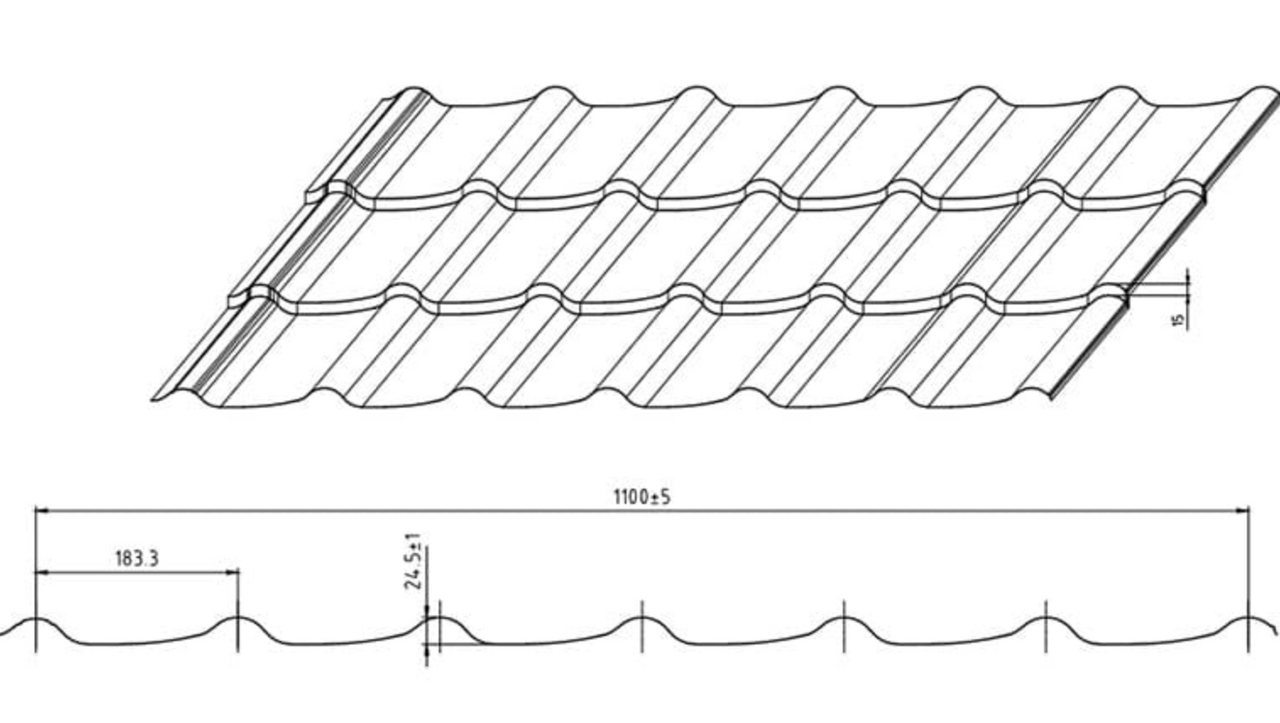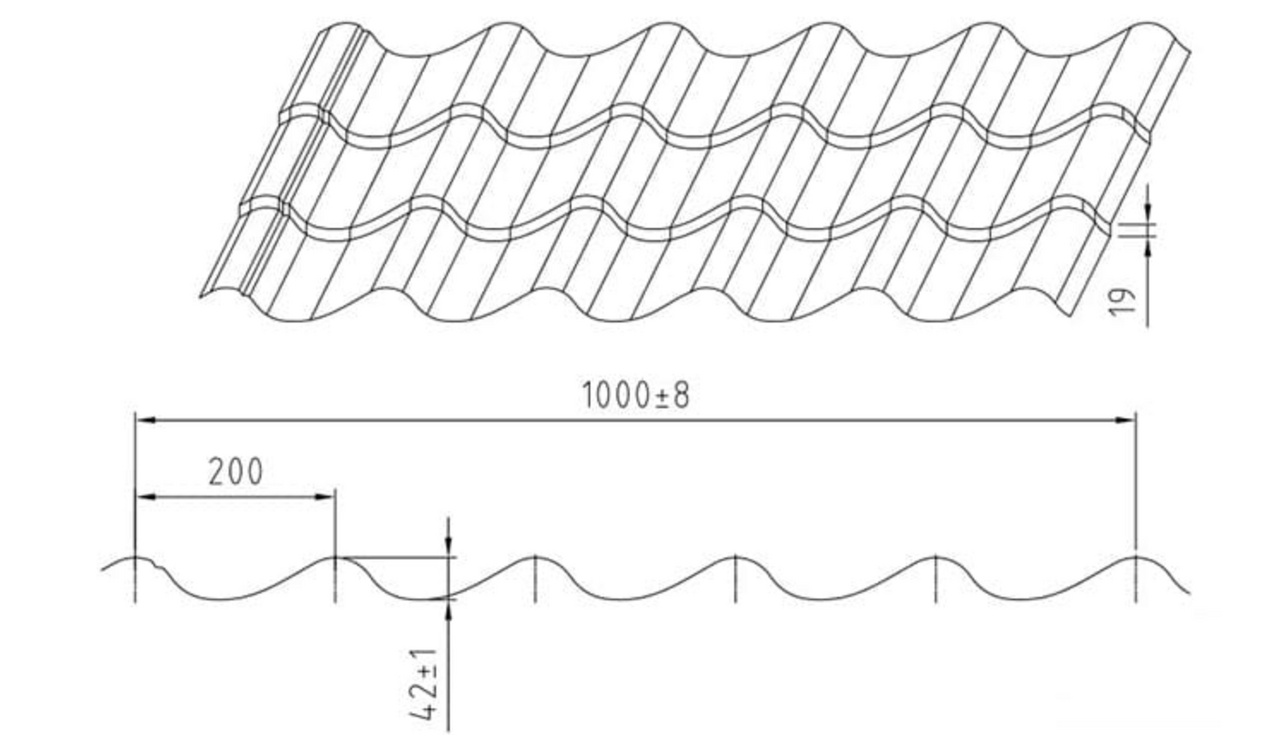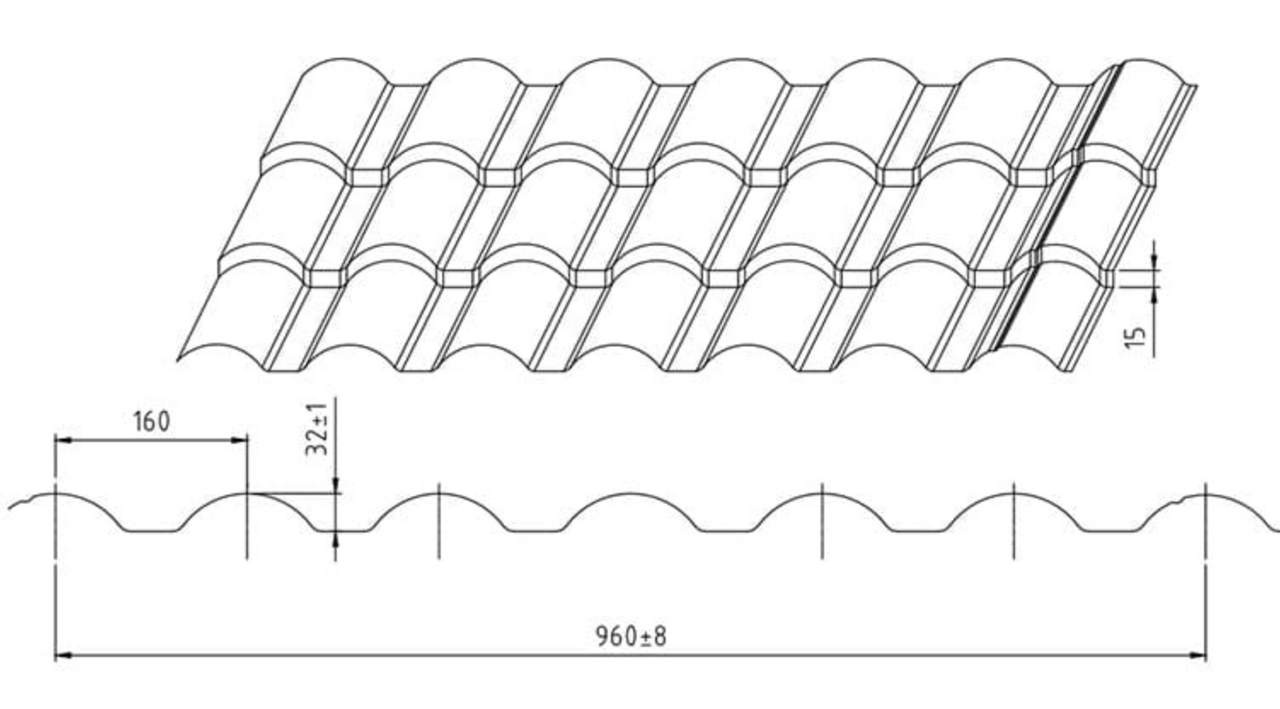
Posted on Thursday, October 3, 2024
A Wave Rib Tile Profile Roll Forming Machine is designed to manufacture metal roofing and wall cladding panels with a wavy or ribbed tile-like profile. These machines are commonly used in the construction industry to produce aesthetically appealing and durable panels that mimic traditional tile roofing but offer the benefits of metal, such as strength, weather resistance, and longevity.
Key features of a Wave Rib Tile Profile Roll Forming Machine include:
This machine is ideal for manufacturers looking to produce large volumes of metal tile profiles efficiently, reducing material waste and production time while ensuring high-quality output.
Wave Rib Tile Profiles are metal roofing or cladding panels designed to imitate the appearance of traditional tiled roofs but with the added benefits of metal. These profiles feature a series of wavy or ribbed patterns that provide both aesthetic appeal and structural integrity. Below are key characteristics and uses of Wave Rib Tile Profiles:
Wave Rib Tile Profiles provide an attractive, durable, and cost-effective roofing and cladding solution that blends traditional aesthetics with modern material technology.





Understanding Coil IDs, Mandrel Sizing, and Shear Pin Safety in Uncoilers
Posted on Wednesday, October 1, 2025
Mismatched sizes can lead to machine damage, downtime, and safety hazards — often evidenced by a shear pin failure.

How Coil Tensile Strength Affects Roll Forming and How to Adjust Your Machine
Posted on Wednesday, October 1, 2025
Changes in tensile strength can significantly affect the finished profile, causing misaligned bends, uneven edges, and out-of-spec parts.

Why Paint Cracks on an Embossing Line Running Pre-Painted Coil and How to Prevent It
Posted on Wednesday, October 1, 2025
This issue not only affects the visual quality of the product but can also lead to increased scrap rates and customer complaints.

The Most Popular Standing Seam Metal Roof Panels in the U.S. — A Comprehensive Guide
Posted on Monday, September 29, 2025
In this post, we’ll explore what panel styles and sizes are most popular in the U.S